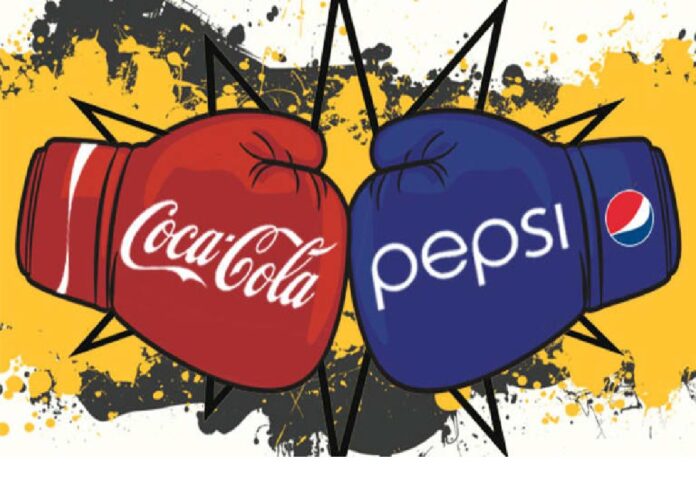(News Trust of India) : The rivalry between Coca-Cola and PepsiCo is legendary, a battle for fizzy supremacy that’s spanned over a century. While both brands have their loyal legions, Coca-Cola has consistently held the upper hand, leaving many to wonder about their winning strategy. One fascinating chapter in this ongoing saga involves a lesser-known tactic dubbed the “Kamikaze strategy,” showcasing Coke’s cunning and adaptability in the face of a Pepsi innovation.
Pepsi’s Crystal Clear Gamble: The Rise of Crystal Pepsi
The year was 1992, and Pepsi was ready to shake things up. Tired of playing second fiddle in the cola market, they took a bold gamble with Crystal Pepsi, a clear cola aimed at health-conscious consumers. The reasoning was simple: clear liquid often signifies purity and cleanliness, aligning with the growing wellness trend. Pepsi launched Crystal Pepsi with a massive marketing campaign, positioning it as a refreshing, modern alternative to traditional colas.
The “Kamikaze Strategy”: Coke’s Counterpunch
Initially, Crystal Pepsi seemed like a stroke of genius. Sales soared, and Pepsi briefly enjoyed a market share lead. However, Coca-Cola wasn’t about to surrender its cola crown without a fight. Instead of launching a direct competitor, they employed a surprising tactic: the “Kamikaze strategy.”
This aptly named approach didn’t involve kamikaze pilots, but a calculated product launch: Tab Clear. Here’s why it was so clever:
- Market Confusion: By introducing a clear diet cola under the established “Tab” brand, Coke created confusion in the clear cola market. Consumers unsure if Crystal Pepsi was regular or diet were less likely to try it.
- Market Cannibalization: Tab Clear effectively fragmented the market for clear colas. Instead of one clear cola option, consumers now had two, diluting Crystal Pepsi’s potential.
- Brand Protection: Launching Tab Clear under the “Tab” brand, rather than Coca-Cola itself, protected the core brand image from any potential negative associations with a potentially risky product.
The Kamikaze strategy proved highly effective. Tab Clear, despite being deliberately designed to fail, successfully muddied the waters and hampered Crystal Pepsi’s momentum. Consumers, confused and unsure, lost interest in the clear cola craze. By 1993, Crystal Pepsi was pulled from shelves, a clear (pun intended) example of Coke’s strategic prowess.
Coke’s Multi-Pronged Approach
The Kamikaze strategy, while fascinating, was just one element of Coke’s broader dominance. Here are some other factors that contributed to their success:
- Brand Consistency: Coke has meticulously nurtured its brand image for over a century. Its iconic red logo, “Open Happiness” slogan, and strong association with Americana culture create a powerful emotional connection with consumers.
- Global Distribution Network: Coke boasts an unparalleled global distribution network, ensuring their products are readily available almost anywhere in the world. This accessibility gives them a significant edge over Pepsi.
- Product Diversification: While known for cola, Coke has diversified its portfolio with successful ventures into other beverage categories like juices, sports drinks, and bottled water. This adaptability caters to diverse consumer preferences and market trends.
- Marketing Savvy: Coke’s marketing campaigns are consistently creative and memorable, from iconic jingles to celebrity endorsements. They understand the power of storytelling and connecting with consumers on an emotional level.
The Cola Wars Continue
The battle between Coke and Pepsi continues, with each brand innovating and adapting to stay ahead. The story of the Kamikaze strategy serves as a fascinating example of strategic thinking and calculated risk-taking in the competitive beverage industry. It also highlights the importance of brand consistency, market awareness, and adaptability in achieving long-term success. While Pepsi may occasionally land punches, Coke’s multi-pronged approach and focus on building a timeless brand have solidified their position as the cola king for generations.
As the cola wars continue to rage, one thing is certain: both brands have much to teach us about marketing, branding, and strategic thinking. By understanding their successes and failures, we can gain valuable insights applicable to any competitive landscape.



